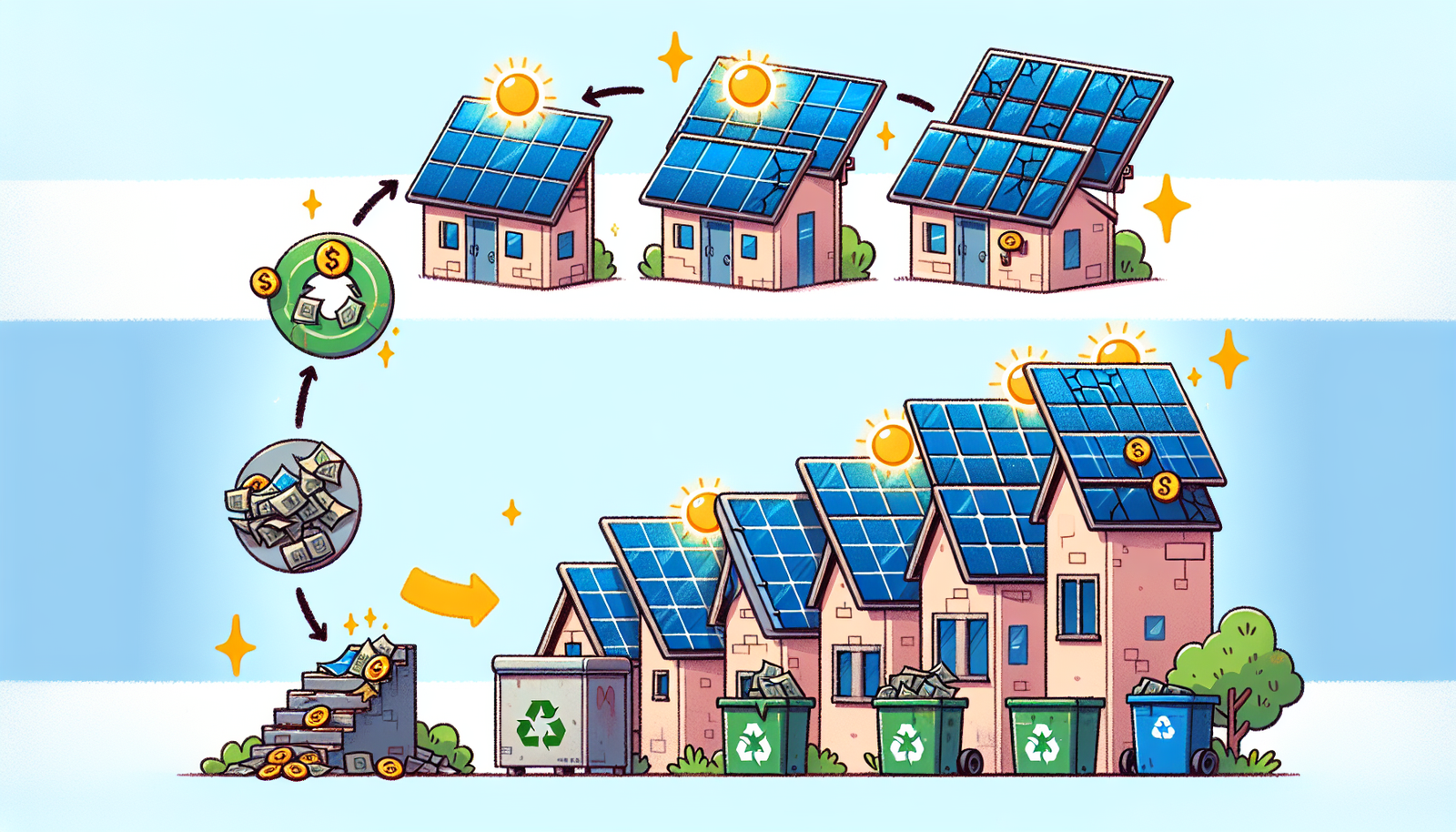What Happens When Solar Panels Die?
As of the end of 2024, approximately 2,000 Gigawatts of solar generation capacity will be operational across the globe. Each solar panel is composed of various materials such as silicon, glass, metals, and polymers, which capture solar energy. While solar panels are generally expected to last up to 30 years, the question arises: what becomes of these materials when solar panels reach the end of their life cycle?
Understanding Solar Panel Lifespan
Solar panels are commonly thought to last around 30 years, but this estimation encompasses more than just their operational lifespan. According to Garvin Heath from the National Renewable Energy Laboratory (NREL), failure rates tend to be higher during the initial phase due to manufacturing or installation errors. Midway through their lifespan, failures are rare, and disturbances notably increase as they approach the three-decade mark. However, even near the end of life, less than one percent of all operational panels are expected to fail.
Weather-related damage is a significant factor in the deterioration of solar panels. Panels exposed to extreme or harsh weather conditions may sustain damage that often renders them uneconomical to repair. As a result, some functional panels may be decommissioned not due to performance failures but due to economic factors.
The Economic Considerations of Solar Panel Maintenance
Efficiency loss over time is a crucial issue influencing the premature retirement of solar panels. Manufacturers typically guarantee a minimum efficiency of 80% over 30 years. Once panels approach that threshold, solar farms often consider it more cost-effective to replace rather than maintain the older models due to the structures’ potential to generate more revenue with the latest technology. This trend results in many usable panels being discarded even when they can still produce energy.
Despite the ability to repair or refurbish panels, the economic realities surrounding restoration versus replacement often favor new installations. For example, a 10 Megawatt solar farm may find it economically viable to upgrade to newer, more efficient models rather than repairing older units. The embedded carbon footprint of transporting and installing these panels raises further sustainability concerns when these seemingly viable units are sent to landfills.
Current Practices and Recycling Challenges
It is estimated that only one in ten solar panels are recycled, while the bulk find their way to landfills. The absence of a standardized tracking system complicates the recycling process. Legislative efforts remain inconsistent, with only certain states mandating recycling practices for decommissioned panels. The Environmental Protection Agency (EPA) is exploring regulations aimed at developing a standardized recycling protocol for solar panels and lithium batteries, yet the lack of federal mandates leaves many panels.
In comparison, Europe has enacted directives, such as the Waste from Electrical and Electronic Equipment (WEEE), which mandates suppliers to collect and recycle panels. This has led to a system where it may be more economical to recycle rather than discard panels, although the costs and logistics need to be addressed.
Exploring Recycling Approaches
When it comes to recycling solar panels, there are two primary methods: mechanical and chemical. Mechanical processes often recover bulk materials like glass and metals but fail to capture rarer components. Chemical methods, while more complex, allow for the extraction of valuable metals such as silicon, silver, and copper, offering a potential path toward more sustainable recycling practices.
The challenge lies not only in the economics of recycling but in the inherent variability of materials used in the panels. Current regulations lack transparency, and manufacturers have no obligation to disclose their raw material compositions. However, the industry is slowly advancing, with companies like ROSI Solar in France working to develop methods that adequately address toxic materials used in production.
Furthermore, innovations in solar technology, such as polymer-free solar panels, are being researched to facilitate easier disassembly. By using laser-welded glass structures, future iterations may promote simpler recycling processes, although the legacy of older panels remains an ongoing issue.
The Future Outlook for Solar Panel Sustainability
As the solar market grows, the need for effective recycling solutions and practices becomes increasingly crucial. Current recycling options are limited both in scope and economic viability. Even though the industry is on the precipice of significant advancements — with innovations promising to make panels easier to recycle — the reality remains. For many panels currently in use, the absence of established recycling processes means too many are discarded, leading to a concerning waste future.
As we move forward, the future of solar energy will not only revolve around efficiency and cost but also about how we manage the lifecycle of these systems and their materials. The answer to what happens to solar panels when they die is not just a question of energy; it’s a broader inquiry into sustainability and responsibility for the resources we utilize.

